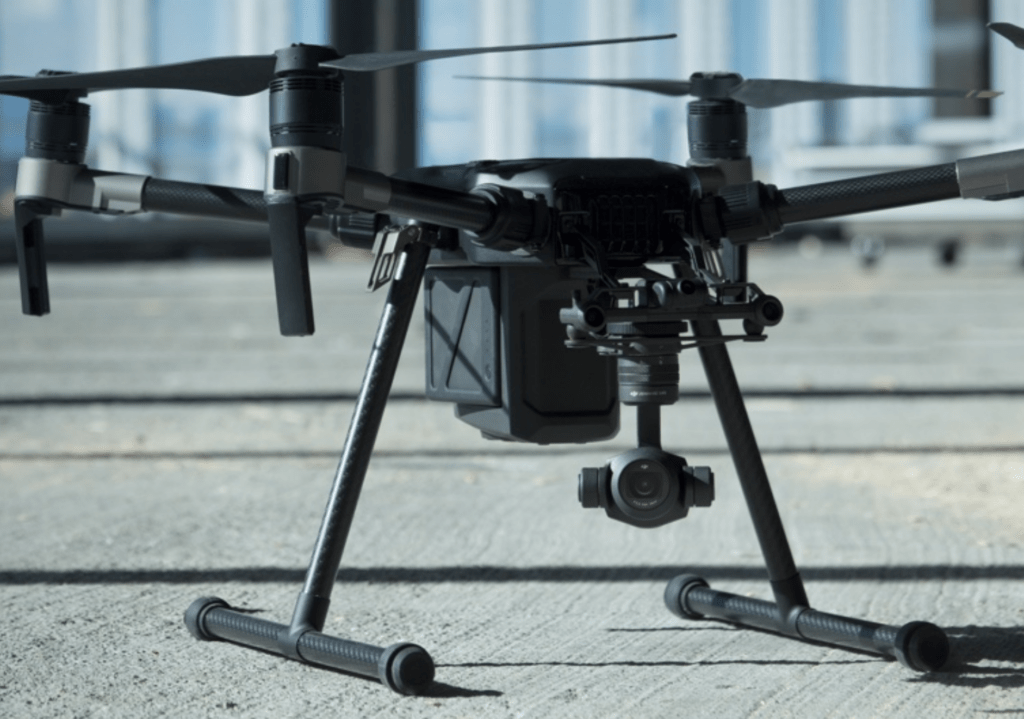Earlier this week we reported that the UK’s Civil Aviation Authority had issued a safety warning for DJI Matrice 200 pilots, following a small number of incidents in which power failures had caused the aircraft to fall out of the sky.
It now appears as though the problem has been traced to the battery and its connection to the drone. The CAA has updated it’s safety notice to reflect that and DJI has also released a statement, explaining the precautions and steps pilots ought to take.
The battery types in question are DJI’s TB50 and TB55 batteries, which are used to power the Matrice 200 and the Inspire 2.
TB55 batteries are used to power the Matrice 200 series of professional drones, while TB50 batteries are used to power the Matrice 200 series and Inspire 2 drones. A small number of customers have reported mid-air power failures while using TB55 batteries, which have “shown incorrect power levels that have led to loss of power mid-flight.”
TB55 batteries share similar power management firmware with the problematic TB50, so the warning to Inspire 2 pilots is based on implication rather than incident as of now.

As a result, DJI is “advising customers to fly with caution when operating their drones equipped with these batteries.”
In the meantime, the manufacturer is working on a firmware update that will provide improvements to flight safety for the affected drones.
The UK CAA has gone a step further than advising caution. It’s issued a statement outlining that flights with the batteries in question:
• over or within 150 metres of any congested area;
• within 50 metres of any person;
• within 50 metres of any, vessel, vehicle or structure which is not under the control
of the SUA Operator or remote pilot of the SUA;
• over or within 150 metres of an open – air assembly of more than 1,000 persons;
or
• using Extended Visual Line of Sight (EVLOS)
are provisionally suspended until further notice.
So what happens next?
“DJI strongly advises customers to strictly follow regulations that are designed to mitigate the risk of a power failure, including U.S. Federal Aviation Administration prohibitions against flight over people and vehicles, and the U.K. Civil Aviation Authority’s offset requirements from people and property. Do not operate over, or in close proximity to, people or property that could be injured or damaged in the event of a power loss. Customers performing non-essential operations may also choose to delay those operations until we are able to provide more information,” says the statement.
DJI has confirmed that it’s working on a “mitigation plan” to allow customers to confidently use these batteries again as soon as possible, as well as a firmware update for the affected batteries.
What Should I Do If I Fly a Matrice 200 or Inspire 2?
If you’re flying in the UK, heed the CAA’s notice, avoid flying close to people, groups of people or structures. Emergency applications are still clear for take-off, providing precuations have been taken.
DJI suggests that customers check the voltage of their TB50 or TB55 batteries before and during the flight. Instructions for that are as follows.
*Instructions for before and during flight:
1. Fully charge the battery according to the indicator on the charger, not the indicator on the battery itself
2. Insert the battery in the drone, power on and check in the app that the voltage is above 4.25V (fully charged)
3. During flight, continue to monitor the voltage of the battery in the battery submenu of the app at all times and ensure it is above 3.7V
4. Plan your flight so as to end the operation and land with at least 3.7V indicated (approximately 30% of full charge)
5. Reminder: Keep the flight within visual line of sight (VLOS) to support a safe return to home
6. Do not fly over people, moving vehicles, or other property that is susceptible to damage
Malek Murison is a freelance writer and editor with a passion for tech trends and innovation. He handles product reviews, major releases and keeps an eye on the enthusiast market for DroneLife.
Email Malek
Twitter:@malekmurison
Subscribe to DroneLife here.